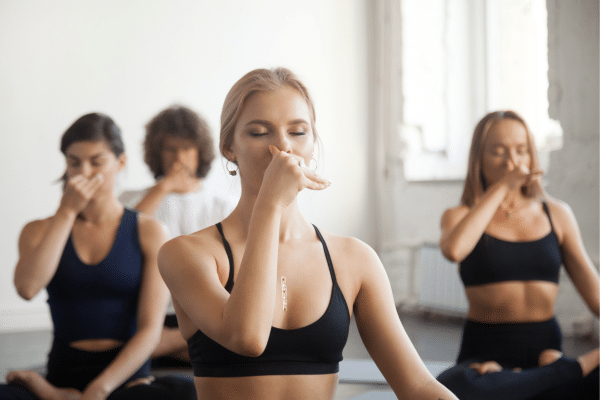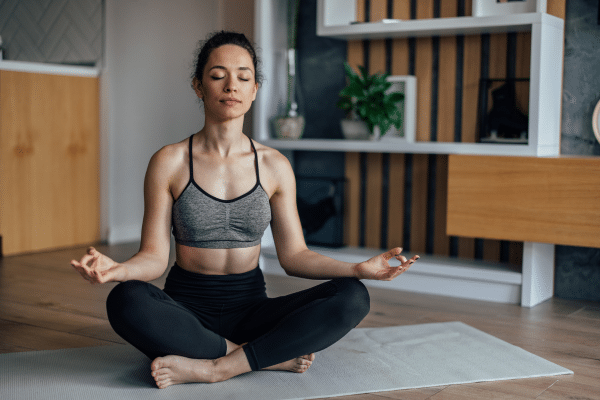In today’s fast-paced society, moments of genuine calm can seem elusive. Yet, the key to inner tranquility might be as close as one’s own breath. Breathing exercises, with roots anchored deep in ancient traditions, have long been recognized for their potent ability to alleviate stress and foster clarity. Simple, yet profoundly effective, these techniques invite individuals to turn inwards, offering a sanctuary from external chaos. By understanding and practicing these age-old methods, it’s possible to cultivate a daily oasis of calm, even amidst the storm of modern life.
Contents
Alternate Nostril Breathing

Delving into the heart of yoga traditions, alternate nostril breathing emerges as a treasured technique. The method involves taking turns breathing through one nostril at a time, usually aided by the fingers to close off the alternate nostril. By doing so, a bridge is built between the left and right hemispheres of the brain, fostering mental equilibrium. This balance plays a pivotal role in promoting calmness and reducing scattered thoughts.
The effects of this exercise aren’t just mental; they ripple through the physiological domain too. Engaging in alternate nostril breathing can lead to a more harmonious cardiovascular rhythm and an overall sense of well-being. Over time, consistent practice may even serve as a potent tool against the detrimental effects of chronic stress, providing both immediate relief and long-term benefits.
Equal Breathing

The beauty of equal breathing lies in its simplicity and symmetry. Practitioners inhale and exhale for identical durations, establishing a rhythmic cycle. This cadence, akin to the ticking of a metronome, provides a grounding experience. As the lungs expand and contract in regular intervals, the mind tends to follow suit, aligning its pace and finding solace in this predictable pattern.
Moreover, the effects of equal breathing go beyond immediate relaxation. Engaging in this practice regularly can help reinforce the natural rhythm of the body and mind. By maintaining a consistent inhalation-exhalation ratio, one cultivates mindfulness and presence. This heightened awareness can translate to everyday activities, allowing individuals to approach tasks with a clearer mindset and a more balanced emotional state.
Yogic Breathing (pranayama)

At the core of yoga lies pranayama, a set of breathing techniques designed to enhance life force energy. The term “pranayama” itself can be broken down into “prana” (life force) and “ayama” (extension or expansion). By manipulating the breath, one taps into this life force, directing and amplifying its flow within the body. It’s a transformative experience, capable of rejuvenating both the mind and body.
There are various forms of pranayama, each with its unique steps and benefits. Some techniques focus on rapid, energizing breaths, while others emphasize slow, deep inhalations and exhalations. Yet, despite their differences, all pranayama exercises share a common goal: to foster a state of inner calmness. With regular practice, individuals may find a notable decrease in feelings of anxiety, tension, and mental clutter, paving the way for a serene and centered existence.
Breath Focus

Breath focus, as the name suggests, requires one to channel all attention to the act of breathing. By concentrating solely on the inhalation and exhalation, all other thoughts and distractions fade into the background. This anchoring of the mind is similar to meditation, where the breath becomes a focal point, guiding practitioners into a deeper state of relaxation and calm.
Benefits of this practice permeate various levels of well-being. Physiologically, directing attention to the breath can lead to deeper, more effective breathing, optimizing oxygen intake. On a mental level, it offers a break from the relentless stream of thoughts that often inundate daily life. Over time, integrating breath focus into daily routines can be instrumental in achieving mental clarity and reducing feelings of overwhelm.
Abdomen Breathing

Abdomen breathing is a technique that emphasizes the diaphragmatic movements during inhalation and exhalation. Instead of shallow, chest-centered breaths, the focus shifts to the abdomen, allowing for deeper and fuller breaths. By engaging the diaphragm more effectively, a significant increase in oxygen exchange occurs, which can lead to enhanced vitality and energy.
But the merits of abdomen breathing aren’t limited to increased oxygenation. By channeling breaths from the abdomen, one can also counteract the effects of stress. Deep, diaphragmatic breathing activates the body’s relaxation response, reducing the production of stress hormones. Regular practitioners often report a marked reduction in tension, as well as an improved ability to cope with life’s challenges with a composed and tranquil demeanor.
Lion’s Breath

Lion’s Breath is a unique breathing technique that stands out due to its distinctive facial expressions and the audible exhale it involves. To practice, one takes a deep inhalation through the nose and then exhales forcefully through the mouth, sticking out the tongue and opening the eyes wide. This might seem unusual, but there’s a method to the apparent madness. By adopting this approach, one releases tension that often accumulates in the face and throat.
Beyond its immediate rejuvenating sensation, Lion’s Breath offers more profound benefits. It aids in increasing circulation to the brain, providing a sense of alertness. Moreover, the forceful exhalation can help purge negative emotions and stress, giving practitioners a renewed sense of vitality. Over time, incorporating Lion’s Breath into regular routines can prove instrumental in breaking free from accumulated mental fatigue and emotional stagnation.
Resonant Breathing

Resonant breathing is a technique that emphasizes harmony and synchronization within the body’s systems. It involves breathing at a rate of 5-6 breaths per minute, a frequency that can induce resonance in the cardiovascular system. By attuning to this rhythm, one can tap into a state of enhanced coherence, where heart rate and breathing synchronize beautifully.
The physiological impacts of resonant breathing are manifold. This breathing pattern has been linked to increased heart rate variability, a metric associated with good cardiovascular health and stress resilience. Moreover, resonant breathing can pave the way for mental clarity and a heightened sense of well-being. With its roots in both ancient practices and contemporary scientific findings, resonant breathing stands as a bridge between tradition and modernity, offering a pathway to inner peace.
The Bottom Line
Harnessing the power of the breath is a journey of rediscovery, a return to the body’s innate wisdom. Across various traditions and cultures, breathing exercises have been cherished for their transformative potential. In today’s world, where distractions abound and stressors are plentiful, these techniques offer a sanctuary. By dedicating mere moments to these practices daily, one can unlock a treasure trove of benefits, ranging from physiological enhancements to profound mental clarity. Embracing the art of conscious breathing can truly be the cornerstone of a balanced, harmonious life.


